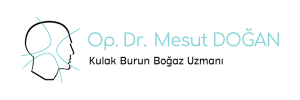Septum Deviation

The nasal septum is the wall between the nostrils that separates the two nasal passages.The septum is made of thin bone in the back and cartilage in the front. A deviated septum occurs when the cartilage or bone is not straight. This deviation can make breathing difficult. The airflow decreases on the deviated side of the nose but the patient may not recognize that if the other side of the nose is open to airflow. In time, nasal turbinate hypertrophy begins and nasal congestion becomes obvious. Both the bone and\or the cartilage may be deviated and the treatment procedure is planned according to deviated part of the septum.
Deviated Septum Surgery (Septoplasty)
During septoplasty, a surgeon, working inside of the nose, makes a small incision in the septum and then removes the excess bone or cartilage. It is performed under local or general anesthesia and takes about 30 minutes to 45 minutes. Since the surgery is performed inside of the nose, it won’t change the shape of the nose.
The surgeon will make a minimal two mm incision inside the nose during the surgery. There will be no scar on the nose. We use dissolvable stitches for septoplasty.
The septum can be deviated at birth or because of an injury. If there is a problem about the shape of the nose, especially for injured noses, septoplasty should be performed along with rhinoplasty (nose job).
A deviated septum occurs mostly together with nasal turbinate hypertrophy. ‘Radiofrequency Turbinate Reduction’ is performed during the procedure and it’s not a surgical operation.
Recovery After Septoplasty
The recovery period is mostly not painful. The patient will be able to go home on the same day as the procedure. Silicon buffers and bandages will be removed after 2 to 3 days. Afterwards, the patient can return to normal routine. We recommend salty solutions after the removal of silicon buffers. Antibiotics are used for one week. Incrustation may occur inside the nose, especially when ‘Radiofrequency Turbinate Reduction’ is performed. This is normal after septoplasty. It may take 1 to 2 months to get completely healed and perfect airflow on both sides of the nose.
There will be no swelling or bruising under the eyes because the surgery is performed inside the nose. It occurs after Rhinoplasty but we reduce them with the ‘Piezo’ technique we’re performing.
Potential Risks and Complications
There are risks and complications for all surgeries but nowadays, they’re minimized thanks to new technologies. The most frequent complication after septoplasty is bleeding but it is rare due to the new surgical techniques. The second risk is infection and it may occur after all type of surgeries but it’s less common after septoplasty. In the long run, an opening in the septum may occur but this risk has been decreased because of the new surgical techniques and special buffers.
